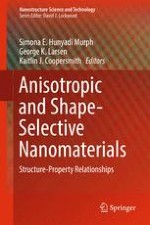2017 | Buch
Anisotropic and Shape-Selective Nanomaterials
Structure-Property Relationships
herausgegeben von: Dr. Simona E. Hunyadi Murph, Dr. George K. Larsen, Dr. Kaitlin J. Coopersmith
Verlag: Springer International Publishing
Buchreihe : Nanostructure Science and Technology
